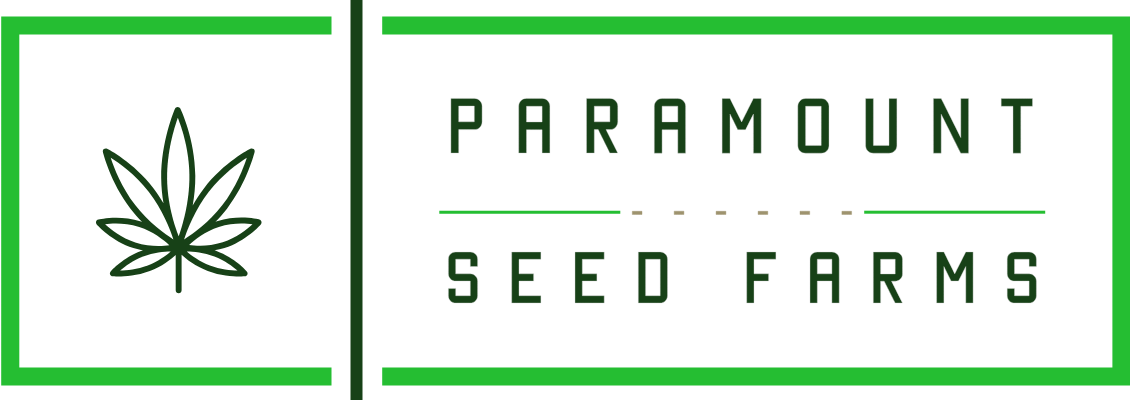Ready to turn your grow? Let’s ditch the dirt and do a clean run with hydro.
We’ll take a look at and review some basic hydro principles, then dive into helping you find the right system to take your garden to the next level…
| Wick System | The system floods the grow tray with nutrient solution and drains it back into the reservoir periodically. This prevents nutrient-salt buildup and oxygenates the roots. It’s customizable and offers efficient water and energy use. However, if conditions are off or the equipment fails. |
| Deep Water Culture (DWC) | The roots of plants are supported by a sloping trough or tube, while nutrient solution flows continuously over them. This method is ideal for fast-growing, lightweight plants and requires minimal growing medium. However, it needs careful monitoring to prevent pump failure and root overgrowth. |
| Nutrient Film Technique (NFT) | There is an advanced way of growing plants where their roots are sprayed with a special liquid while hanging in the air. This method helps the plants to get more nutrients and oxygen, which is good for their growth. However, it needs special tools and someone who knows what they’re doing to ensure everything works correctly. |
| Ebb and Flow (Flood and Drain) | There is an advanced way of growing plants where their roots are sprayed with a special liquid while hanging in the air. This method helps the plants get more nutrients and oxygen, which is good for their growth. However, it needs special tools and someone who knows what they’re doing to ensure everything works correctly. |
| Aeroponics | The roots of plants are showered with a nutrient solution in the form of tiny water droplets in aeroponics. This provides them with a nutrient-rich and oxygen-rich environment that leads to fast and predictable growth. Aeroponics is widely used in commercial operations because of its efficiency, speed, predictability, and similarity to the gardening technique used in space. |
| Drip System | The slow drip of nutrient solution onto each plant’s base provides precise control over plant health and productivity. This method is commonly used in commercial operations due to the high level of control it offers and is highly efficient and easily automated. Did you know commercial hydroponics systems implemented 900 years ago were drip hydro and help irrigate enormous crops in what is now Egypt? |
Science Behind Hydroponics
Hydroponics is more than just a trendy buzzword; it’s a science-backed method with proven benefits to horticulture, farming, and history.
Plants grown hydroponically are often healthier and more productive than their soil-grown counterparts.
Nutrients in hydroponics are more readily available to plants, and roots can consume pure fuel in combination with higher oxygen ratios compared to soil gardens. Since cannabis is a heavy-feeding plant, most cannabis growers prefer hydroponics when growing indoors, among its other advantages.
Hydroponic Garden Must-Have Tools
Last update on 2025-04-16 / Affiliate links / Images from Amazon Product Advertising API
Most Common Types of Hydroponic Systems
There are six types of hydroponic systems, each with unique advantages and applications. Understanding these systems is crucial for anyone interested in hydroponics, whether you’re a hobbyist or a commercial grower.
Wick System
The Wick system is the most straightforward type of hydroponic system to build. It’s a passive system with no moving parts. Water and nutrients are drawn into the growing medium through a wick, giving the plants a steady supply of nutrients.
Deep Water Culture (DWC)
In a Deep Water Culture system, the plants are suspended in a nutrient solution with their roots submerged. Air stones or diffusers provide the plants with the necessary oxygen.
Nutrient Film Technique (NFT)
The Nutrient Film Technique involves a continuous flow of nutrient solution over the roots of the plants, which are supported by a sloping trough or tube. This system is particularly effective for fast-growing, lightweight plants.
Ebb and Flow (Flood and Drain)
The Ebb and Flow system temporarily floods the grow tray with nutrient solution, then drains it back into the reservoir. This action oxygenates the roots and helps prevent nutrient-salt buildup.
Aeroponics
Aeroponics is a high-tech type of hydroponics where roots are misted with the nutrient solution while suspended in the air. This system provides excellent oxygenation and nutrient absorption.
Drip System
In a Drip system, a slow feed of nutrient solution is released onto the base of each plant. A drip system is highly efficient and can be automated easily. Often, growers look to drip hydroponics systems as a cannabis self-watering system.
Benefits of a Hydroponic Garden
Hydroponic systems offer numerous benefits over traditional soil-based gardening. Here are some of the key advantages:
- Efficient Use of Water: Hydroponic systems use significantly less water than traditional gardening methods. This is because the water in a hydroponic system is recirculated, reducing waste.
- Controlled Nutrient Management: Hydroponics gives you complete control over the nutrients your plants receive. This allows for precise management of plant health and productivity.
- No Soil Required: Hydroponics eliminates the need for soil, making it an excellent option for urban environments or areas with poor soil quality.
- Reduced Pest and Disease Problems: Because hydroponic systems are typically indoors and soilless, they are less prone to pests and diseases that plague traditional gardens.
- Faster Plant Growth: Plants grown hydroponically often grow faster and yield more than those grown in soil.
How Each Type of Hydroponic System Works
Choosing the right hydroponic system depends on several factors, including your budget, available space, and the type of plants you wish to grow. In this section, we’ll delve deeper into each type of hydroponic system, discussing its inner workings, benefits, and potential downsides. We’ll also provide practical tips for setting up and maintaining each system.
Wick System: Simplicity at Its Best
The Wick hydro system is the most basic type of hydroponic system, making it an excellent choice for beginners. It operates on a simple principle: a wick, often made from a material like rope or felt, draws the nutrient solution into the growing medium.
The Wick system is passive, meaning it doesn’t require any pumps. However, using a growing medium that transports water and nutrients effectively is essential. Good choices include coconut coir, perlite, or vermiculite.
While the Wick system is fantastic for small plants and beginner gardeners, it may not be suitable for larger plants, which may need help to get enough water or nutrients through the wick.
Deep Water Culture (DWC): Immersed in Nutrients
Deep Water Culture (DWC) is another straightforward system that’s easy to use. In a DWC system, your plants’ roots are suspended in a nutrient solution, providing a constant supply of water, oxygen, and nutrients.
An air pump with an air stone pumps bubbles into the nutrient solution and oxygenates the water. This prevents your roots from drowning in the water, a common pitfall for beginner hydroponic gardeners.
DWC systems are inexpensive and easy to make, making them an excellent choice for hobbyists. However, DWC might not be suitable for large plants or plants with long growing periods.
Nutrient Film Technique (NFT): A Continuous Flow of Nutrients
The Nutrient Film Technique (NFT) is famous for commercial hydroponic systems. In an NFT system, plants are grown in channels with a nutrient solution along the bottom. The answer is then recirculated back to the beginning of the system, making it a highly efficient method.
One of the critical advantages of NFT is that it requires a minimal growing medium. However, monitoring the system is essential, as pump failure can ruin your crop, and roots can become overgrown and clog the channels.
Ebb and Flow: A Cycle of Flooding and Draining
AKA Flood and Drain, the Ebb and Flow system periodically floods the grow tray with nutrient solution, then nutrient solution drains it back into the reservoir. This action oxygenates the roots and helps prevent nutrient-salt buildup.
Ebb and Flow systems offer efficient water and energy use and can be customized to your needs. However, the roots can dry out quickly if the environmental conditions are off or the pump or timer fails.
Aeroponics: High-Tech Hydroponics
Aeroponic systems are the most high-tech hydroponic setups you can build. In an aeroponic system, the roots of your plants are misted with a nutrient solution while being suspended in the air. This system provides excellent oxygenation and nutrient absorption.
While aeroponic systems can grow plants even quicker than others, they require specialized spray nozzles to atomize the nutrient solution. They also require careful monitoring, as high-pressure nozzles can fail, and roots can dry out.
Drip System: Precision and Control
Drip systems are standard in commercial operations due to their high level of control over the feeding and watering schedule. In a Drip system, a slow feed of nutrient solution is released onto the base of each plant. Drip hydroponics systems are highly efficient and can be easily automated. Drip is the most common commercial cannabis hydroponic system.
However, Drip systems may need to be more efficient for a miniature garden. They also require careful monitoring of pH and nutrient levels, especially in a recirculating system. In a waste system, there can be a high level of waste.
Hydroponic System: Pros and Cons
Each hydroponics system has its unique advantages and potential downsides. Here’s a quick summary of each hydroponic method:
- Wicking System Hydroponics: Great for beginners and small plants, but may need to provide more nutrients for larger plants.
- Deep Water Culture System: Easy to use and inexpensive, but unsuitable for large plants or plants with long growing periods.
- Nutrient Film Technique System: Efficient and requires minimal growing medium but requires close monitoring to prevent pump failure and root overgrowth.
- Ebb and Flow System: Efficient use of water and customizable, but roots can dry out quickly if conditions are off or equipment fails.
- Aeroponics Systems: Provides excellent oxygenation and nutrient absorption but requires specialized equipment and careful monitoring. Aeroponics Systems are the preferred hydroponic growing system NASA as well as cannabis cultivator around the globe for the system’s ability to produce clones (cuttings) in a very short time.
- Drip System Hydroponics: Offers high control over feeding and watering but may be overkill for small gardens and requires careful monitoring of pH and nutrient levels.
Setting Up Your Hydroponic System: Step-by-Step Guide
In this section, we’ll provide a step-by-step guide on setting up each type of hydroponic system and how each system works. We’ll also share some practical tips for maintaining your system and ensuring your plants thrive.
Wick Hydroponic System: Growing & Maintenance

- Choose Your Container: Any container can be used deep enough to hold the nutrient solution and the wick. Plastic containers are commonly used due to their durability and ease of use.
- Install the Wick: The wick should be made from a material that can absorb and transport water effectively. The wick should be extended, going from the bottom of the container up into the growing medium.
- Add the Growing Medium: Fill the container with your chosen growing medium. Good choices include coconut coir, perlite, or vermiculite.
- Seeds or Seedlings: It’s best to plant your seeds or seedlings in the growing medium, ensuring they are securely positioned.
- Maintain the Nutrient Solution: Regularly check the nutrient solution level and add more. Also, monitor the pH level of the solution and adjust it to the optimal range for your plants.
Read the dedicated page on the Wick Hydroponic technique.
Deep Water Culture Hydroponic Systems (DWC)
- Prepare Your Reservoir: Your reservoir should be a sturdy container holding the nutrient solution and your plants. It should also be dark or opaque to prevent light from reaching the nutrient solution, which can lead to algae growth.
- Install the Air Pump: The air pump should be connected to an air stone at the reservoir’s bottom. This will oxygenate the nutrient solution and prevent your roots from drowning.
- Add Your Plants: Your plants should be housed in net pots placed on a foam board or the top of the reservoir. Add some hydroponic growing media into your net pots to provide a home for the beginning of your root system and plant stems.
- Maintain the Nutrient Solution: Regularly check the nutrient solution level and add more. Also, monitor the pH level of the solution and adjust it to the optimal range for your plants.
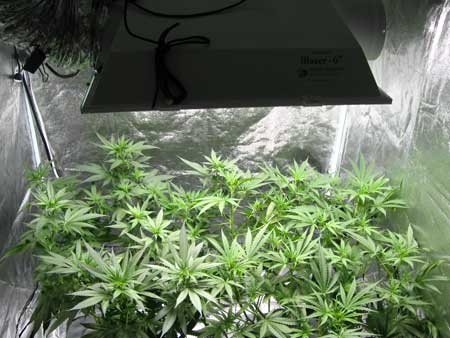
Read the dedicated page on growing huge plants on the DWC Hydro System page.
NFT Hydro System – Build and Wait…
- Prepare Your Channels: Your channels should be sloping to allow the nutrient solution to flow along the bottom. The grow channels need to be wide enough to accommodate your plants.
- Install the Pump: The pump should be powerful enough to transport the nutrient solution from the reservoir to the top of the channels.
- Add Your Plants: Your plants should be housed in net pots placed in the channels. Add some hydroponic growing media into your net pots to provide a home for the beginning of your root system and plant stems.
- Maintain the Nutrient Solution: Regularly check the nutrient solution level and add more. Also, monitor the pH level of the solution and adjust it to the optimal range for your plants.
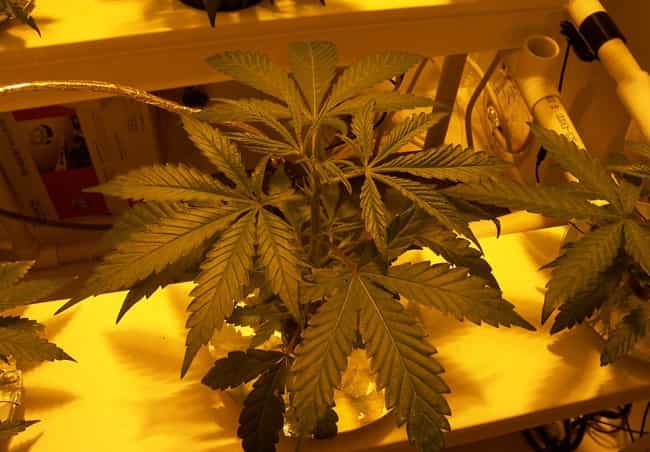
Read more on Nutrient Film Technique (NFT) Hydroponics.
Ebb and Flow Hydroponic System: Setting Up and Maintenance
- Prepare Your Tray and Reservoir: Your tray should be filled with a growing medium. The reservoir should be placed below the tray and connected to a water pump.
- Install the Timer: The timer should be set to flood the tray with nutrient solution a few times per day, depending on the needs of your plants.
- Add Your Plants: Your plants should be housed in net pots placed in the tray. Add some hydroponic growing media into your net pots to provide a home for the beginning of your root system and plant stems.
- Maintain the Nutrient Solution: Regularly check the nutrient solution level and add more. Also, monitor the pH level of the solution and adjust it to the optimal range for your plants.
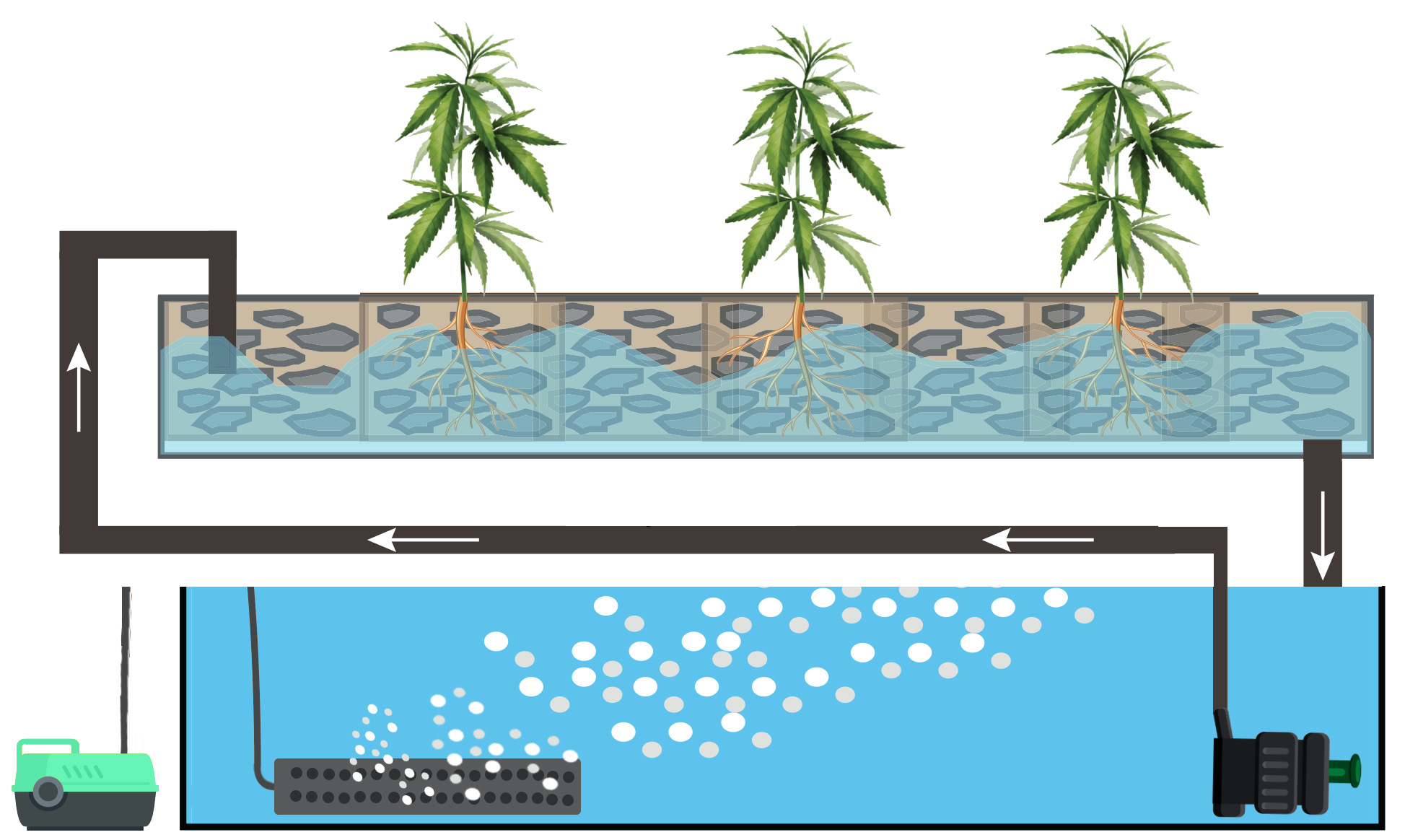
Read about the Ebb and Flow or Flood and Drain hydroponic system.
Aeroponics Systems: Difficult, Fast and Rewarding
- Prepare Your Container: Your container should be large enough to hold your plants and the misting system. It should also be dark or opaque to prevent light from reaching the nutrient solution, which can lead to algae growth.
- Install the Misting System: The misting system should be designed to atomize the nutrient solution and spray it onto the roots of your plants. High-pressure nozzles are typically used for this purpose.
- Add Your Plants: Your plants should be housed in net pots suspended in the air inside the container. Add some hydroponic growing media into your net pots to provide a home for the beginning of your root system and plant stems.
- Maintain the Nutrient Solution: Regularly check the nutrient solution level and add more. Also, monitor the pH level of the solution and adjust it to the optimal range for your plants.
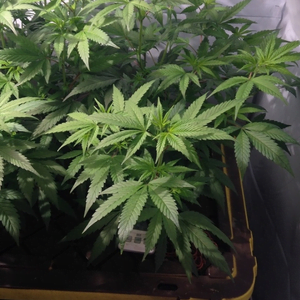

Grow like NASA – Complete Aeroponics Systems info + Best Aero cloner Cloning Technique
Drip Hydroponic System: Active or Passive Hydro System?
- Prepare Your Container: Your container should be large enough to hold your plants and the drip system. It should also be dark or opaque to prevent light from reaching the nutrient solution, which can lead to algae growth.
- Install the Drip System: The drip system should be designed to deliver a slow feed of nutrients to the base of each plant. It can be automated for ease of use.
- Add Your Plants: Your plants should be housed in net pots placed in the container. Add some hydroponic growing media into your net pots to provide a home for the beginning of your root system and plant stems.
- Maintain the Nutrient Solution: Regularly check the nutrient solution level and add more. Also, monitor the pH level of the solution and adjust it to the optimal range for your plants.
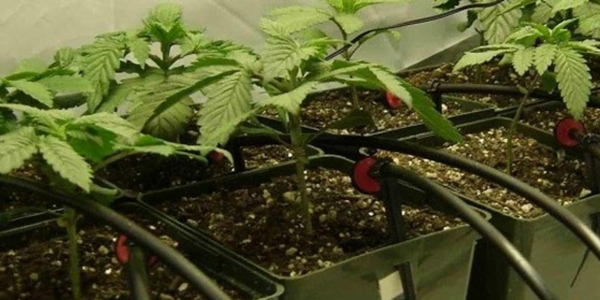
The most efficient way to run a garden for thousands of years… Drip Hydroponic System – Read More!
Hydroponic System FAQs
What are the main types of hydroponic systems?
The six main types of hydroponic systems are nutrient film technique (NFT), deep water culture (DWC), drip system, aeroponic system, flood and drain, and wick system.
How does the nutrient film technique (NFT) system work?
An NFT system continuously circulates a thin film of nutrient-rich water over the plant’s root system. This allows the roots to access water and nutrients at all times.
What is a deep water culture (DWC) system?
The plant’s roots are suspended in a nutrient-rich water solution in a deep water culture system. Air stones or diffusers are used to provide oxygen to the roots. This system is often used for growing lettuce and other leafy greens.
How does a drip system work?
In a drip system, a slow drip of nutrient and water solution is provided to the plant’s root system through a network of tubes and emitters. This allows for precise control over the amount of nutrients and water the plants receive.
What is an aeroponic system?
An aeroponic system is a hydroponic system where the plant’s roots are suspended in air. Nutrient-rich water is sprayed onto the seeds at regular intervals. This system allows for maximum oxygenation of the sources.
How does a flood and drain system work?
The plants are placed in a tray or container filled with a nutrient-rich water solution in a flood and drain system. The water is periodically pumped into the tray, flooding the roots, and then drained back into the reservoir. This cycle is repeated several times a day.
What is a wick system? Is it considered one of the types of hydroponics systems?
A wick system is a simplistic type of hydroponic system where a wick is used to draw the nutrient solution from a reservoir to the plant’s root system. Home growers commonly use this system due to its simplicity and low maintenance requirements.
How do different types of hydroponic systems compare to each other?
Different types of hydroponic systems have their advantages and disadvantages. Some systems, like NFT and aeroponic systems, provide maximum oxygenation to the roots, while others, like DWC and drip systems, offer more stability and control over nutrient flow.
What are the benefits of using each different hydroponic systems?
Hydroponic systems allow for more efficient use of resources, as they require less water and land than traditional soil-based farming. They also allow for precise control over nutrient delivery, resulting in faster growth and higher yields.
The Future of Gardening is Hydroponics
Hydroponics is more than just a trend; it’s a revolutionary approach to gardening that offers numerous benefits. With the right system and proper care, you can grow healthier, more productive plants in less time and with less water than traditional gardening methods.
Hydroponics can open new possibilities for sustainable and efficient gardening for hobbyists or commercial growers. So why wait? Dive into the world of hydroponics and start growing a greener future.
In this informative piece, we delve into the 6 distinct types of hydroponics systems: the wick system, deep water culture (DWC), nutrient film technique (NFT), ebb and flow, aeroponics, and drip system. Each system is thoroughly explained, outlining how it operates, its benefits, and any potential drawbacks. Additionally, we explore the advantages of hydroponics, such as accelerated plant growth, decreased occurrences of pests and diseases, and the ability to cultivate plants without soil. Furthermore, we provide step-by-step instructions for setting up and maintaining each hydroponic system type.
